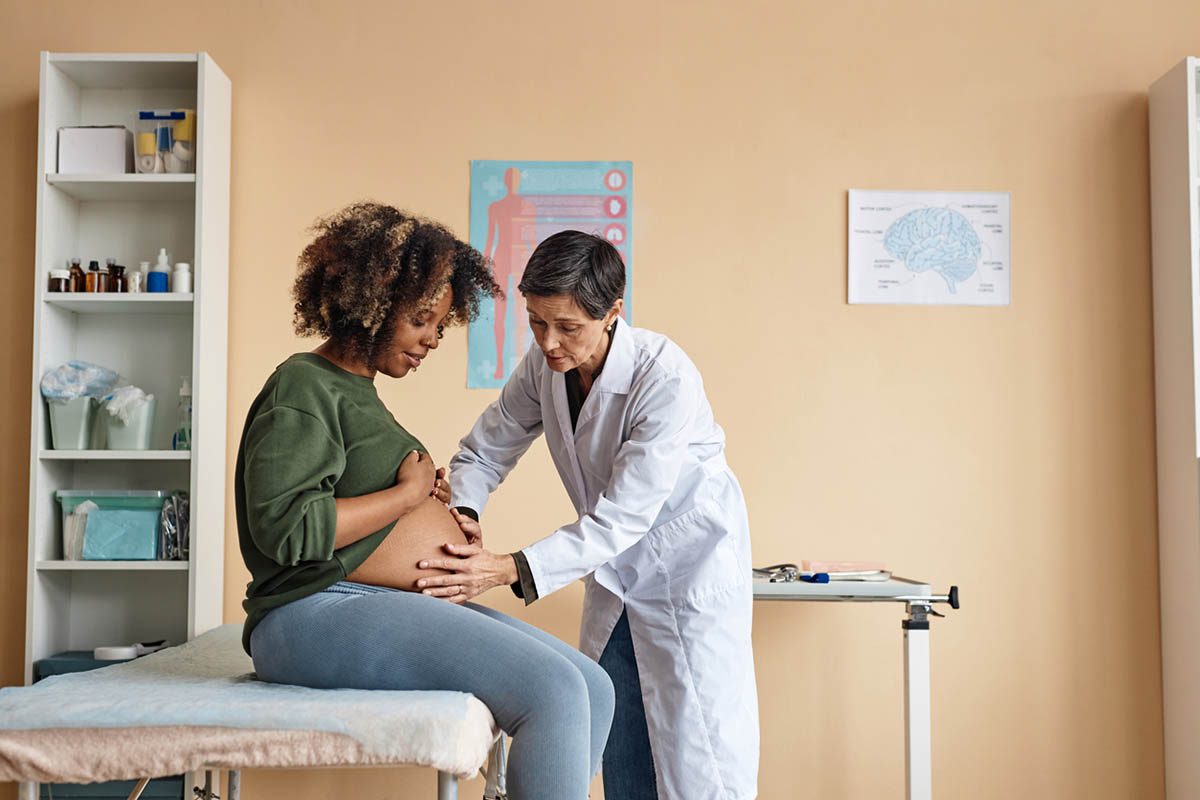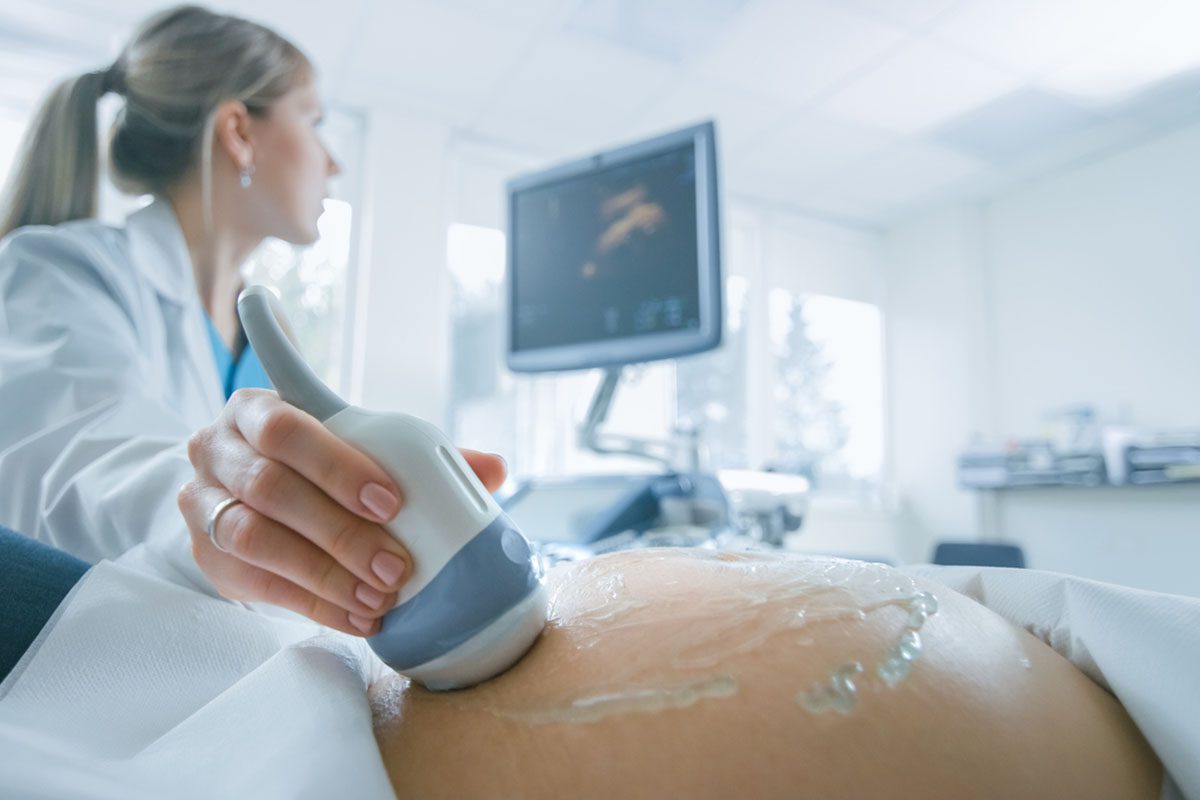Psychogenic Non-Epileptic Seizures in a Second-Trimester Pregnant Woman With a Previous Child Loss
To the Editor: Psychogenic non-epileptic seizures (PNES), also known as non-epileptic attack disorder,1 are events that apparently simulate an epileptic seizure and are triggered essentially by emotion and psychological events of which a patient does not have control. These are not due to abnormal electrical discharges in the brain as in epilepsy. We report a case of PNES in a pregnant woman.
Case report. Ms A, a 19-year-old woman who was 24 weeks pregnant, was transferred via life flight from a local hospital. She initially presented to the local hospital for complaints of headache, syncopal episodes with visual changes, and loss of consciousness for 1 day. Shortly after she arrived at the local hospital, she developed reduced sensation on the right side and decreased movement on left side of her body. During her evaluation, she developed tonic-clonic seizures for which a loading dose of phenytoin was given and she was intubated for airway protection and transferred to our facility.
Electroencephalography (EEG) revealed no epileptiform activity. Magnetic resonance imaging and magnetic resonance venography of brain showed no abnormalities. Complete blood cell count, comprehensive metabolic panel results, lactic acid test findings, and results of blood gas analysis were within normal limits. Video EEG showed no epileptogenic activity. Ms A had past history of drop attacks since age 13 with a frequency of 1 or 2 attacks per year. During those attacks she would lose consciousness for less than a minute with no residual deficits. She discovered that these attacks or spells occurred in conjunction with an increase in stressors in her life. At the time of this presentation, she found herself threatened by her roommate and felt stress about her pregnancy because she had lost a child in the past.
The true prevalence of PNES is unknown, but the estimated prevalence is 2 to 33 per 100,000.2 The prevalence of epilepsy is 0.5% to 1% in the general population; among the general population, intractable epilepsy accounts for 20% to 30%, of which 10%-20% is accounted for by PNES.3 PNES are more prevalent in females, who constitute up to 80% of cases.4 Although PNES is common in all age groups, patients usually present in their third decade. Several clinical signs help to distinguish these non-epileptic spells from epileptic seizures, including gradual onset, fluctuating course, side-to-side head movements, bilateral asynchronous movements, arching of back, stuttering, and violent thrashing movements.5 The duration of PNES may vary from less than 2 minutes to 150 minutes. Video EEG remains the gold standard for distinguishing PNES from epileptic seizure.
PNES is often associated with psychiatric conditions such as major depressive disorders, anxiety or bipolar disorder, posttraumatic stress disorder, and borderline personality traits.6 PNES is more commonly seen in patients with epilepsy and also in patients with a family history of epilepsy.7 It can also be reflected as a manifestation of repressed psychological detriment in response to trauma, such as child and sexual abuse.8
There is no single strategy designed for the management of PNES. Treatment should include multidimensional approaches involving a neurologist, psychiatrist, psychotherapist, and primary care physician. The primary focus should be on addressing the underlying trigger. Psychotherapy, including cognitive-behavioral therapy, insight-oriented therapy, and mindfulness techniques, remains the mainstay of treatment.9 Treatment of comorbid conditions such as anxiety and depression results in a decrease in the incidence of PNES and an improvement in the overall prognosis.9
References
1. Baker GA, Brooks JL, Goodfellow L, et al. Treatments for non-epileptic attack disorder. Cochrane Database Syst Rev. 2007;(1):CD006370. doi:10.1002/14651858.CD006370 PubMed
2. Benbadis SR, Allen Hauser W. An estimate of the prevalence of psychogenic non-epileptic seizures. Seizure. 2000;9(4):280-281. doi:10.1053/seiz.2000.0409 PubMed
3. Ristić AJ, Petrović I, Vojvodić N, et al. Phenomenology and psychiatric origins of psychogenic non-epileptic seizures. Srp Arh Celok Lek. 2004;132(1-2):22-27. PubMed doi:10.2298/SARH0402022R
4. Marchetti RL, Kurcgant D, Gallucci Neto J, et al. Evaluating patients with suspected nonepileptic psychogenic seizures. J Neuropsychiatry Clin Neurosci. 2009;21(3):292-298. PubMed doi:10.1176/appi.neuropsych.21.3.292 .
5. Sanjay KJ, Alan BE. Psychogenic non-epileptic imitating epileptic seizures. In: Panayiotopoulos CP, ed. Atlas of Epilepsies. London, UK: Springer-Verlag: 2010;597-609.
6. D’ Alessio L, Giagante B, Oddo S, et al. Psychiatric disorders in patients with psychogenic non-epileptic seizures, with and without comorbid epilepsy. Seizure. 2006;15(5):333-339. PubMed doi:10.1016/j.seizure.2006.04.003
7. Reuber M. The etiology of psychogenic non-epileptic seizures: toward a biopsychosocial model. Neurol Clin. 2009;27(4):909-924. PubMed doi:10.1016/j.ncl.2009.06.004
8. Bortz JJ, Stonnington C. Clinical and neuropsychological features of male patients with nonepileptic seizures. Epilepsia. 1995;36:136.
9. Lesser RP. Treatment and outcome of psychogenic nonepileptic seizures. Epilepsy Curr. 2003;3(6):198-200. PubMed doi:10.1046/j.1535-7597.2003.03601.x
Author affiliations: University of Nebraska Medical Center, Omaha (Drs U. Jain, Tiruveedhula, and Sharma); and Pacific Medical College, Udaipur, India (Dr J. Jain).
Potential conflicts of interest: None reported.
Funding/support: None reported.
Published online: December 19, 2013.
Prim Care Companion CNS Disord 2013;15(6):doi:10.4088/PCC.13l01562
© Copyright 2013 Physicians Postgraduate Press, Inc.




